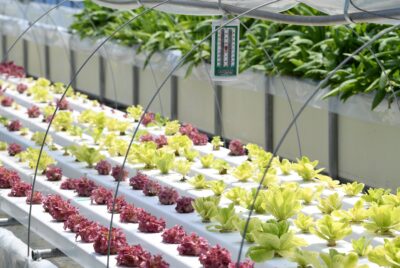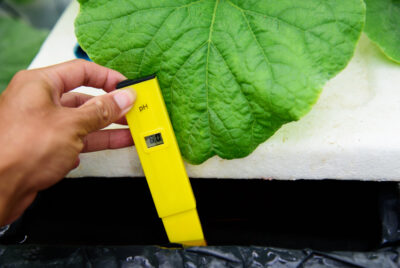Hydroponic Spinach
We may earn a commision from purchases made using our links. Please see our disclosure to learn more.
Hydroponic Spinach: The Green Revolution in Your Backyard.
Hello there! If you’ve landed on this page, it’s likely because, like me, you’re passionate about the wonders of hydroponics. Or perhaps, you’re just curious and have a newfound interest in growing spinach the hydroponic way. Either way, buckle up as we embark on this verdant journey together!
Introduction
What is Hydroponics?
Have you ever wondered how plants might thrive without soil? At first, it sounds fantastical, something out of a sci-fi movie. But, in reality, hydroponics, which refers to the technique of growing plants without soil using mineral nutrient solutions in a water solvent, has been around for quite some time. Essentially, it’s akin to giving plants a VIP buffet where they get everything they need directly, which is nothing short of revolutionary.
Why Hydroponic Spinach?
So, why specifically choose spinach? This leafy green, renowned for its nutritional value, versatility, and as Popeye’s favorite power booster, happens to be one of the best candidates for hydroponics. Given its rapid growth rate and straightforward care requirements, it’s no wonder spinach is a top choice.
Benefits of Growing Spinach Hydroponically
Faster Growth Rates
Let’s envision this together: your spinach growing two or even three times faster than usual. Because of the direct supply of nutrients, using specific hydroponic instruments and controllers, and ideal growing conditions, hydroponically grown spinach speeds ahead of its soil-based cousins. Not to mention, this method allows for consistent growth year-round.
Reduced Pests and Diseases
On top of that, growing hydroponically means bidding farewell to many garden pests and diseases. With no soil in the picture, many common pests become a thing of the past. It’s as if your spinach is protected in its very own fortress.
Efficient Use of Water and Nutrients
Furthermore, while water scarcity is becoming a global concern, hydroponics offers a sustainable solution. Astonishingly, hydroponic systems can use up to 90% less water than traditional farming. So, besides producing lush greens, you’re also conserving water.
Getting Started: A Beginner’s Guide
Selecting the Right Hydroponic System
Venturing into the hydroponic world can be overwhelming at first. But, once you understand the basics, it becomes a thrilling endeavor. Choosing a system for your spinach is pivotal.
Deep Water Culture (DWC):
Here’s a snapshot: spinach floating on water, roots immersing and soaking up nutrients. DWC is not only beginner-friendly but also has a proven efficiency record.
Nutrient Film Technique (NFT):
This is a tad more intricate. Picture spinach on a slope, a thin film of nutrient-rich water flowing over its roots. This setup ensures roots receive ample oxygen, which is critical for growth.
Nutrient Solutions for Hydroponic Spinach:
Feeding Your Spinach Moreover, nutrition is key. Just as we thrive on balanced diets, spinach requires a cocktail of specific nutrients to flourish. It’s paramount to select a solution tailored for leafy greens.
Tips and Tricks for a Flourishing Hydroponic Spinach Harvest
Light and Temperature Considerations
Spinach loves light, but there’s a catch; it detests excessive heat. Aim for 10-14 hours of light daily. However, always ensure that the temperatures hover between 60-70°F (15-21°C).
pH Balance and Nutrient Levels
Maintaining balance is crucial in hydroponics. While it’s tempting to go all out with nutrients, spinach prefers its environment moderated. Hence, it’s vital to keep pH levels between 6.0-7.5.
Pruning and Harvesting Techniques
By now, you might be wondering, “How do I get bushier spinach with more leaves?” Well, the secret lies in pruning. Focus on the older, outer leaves and let the younger ones flourish. And remember, harvesting requires a gentle touch. Always leave a few centimeters of the plant base for regrowth.
Common Challenges and Their Solutions
Addressing Yellowing Leaves
Admittedly, even seasoned hydroponic growers sometimes face challenges. For instance, yellowing leaves could indicate overwatering or nutrient imbalances. But, with careful monitoring, these issues can be promptly addressed.
Overcoming Nutrient Deficiencies
Another common issue is nutrient deficiency. If leaves begin yellowing or curling, revisit your nutrient mixture. A balanced diet works wonders, even for plants!
Preventing Pests Naturally
Lastly, even the hydroponic realm isn’t entirely pest-free. However, introducing beneficial insects like ladybugs or employing natural repellents like neem oil can fortify your spinach fortress.
Conclusion
In conclusion, hydroponic spinach isn’t just a method; it embodies sustainability, efficiency, and a profound appreciation for greens. By now, I hope you’re as excited as I am. Ready to join the green revolution from your very backyard?
FAQs
How long does soilless spinach take to grow?
Typically, spinach can be ready for harvest in 4-6 weeks from planting.
Can I use tap water in my hydroponic system?
Yes, but it’s best to filter out chlorine and adjust pH levels appropriately.
Why do my spinach leaves taste bitter occasionally?
Often, extended exposure to high temperatures induces bitterness. Ensure a cooler growing environment.
How frequently should I change the nutrient solution?
Ideally, every 2-3 weeks. However, monitor plants for signs of nutrient deficiencies or imbalances.
Is it feasible to grow other veggies using the same system?
Absolutely! Many leafy greens like lettuce, kale, and arugula flourish under similar conditions.





Comments are closed.